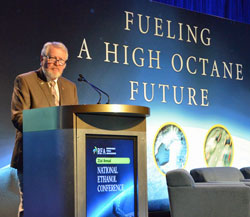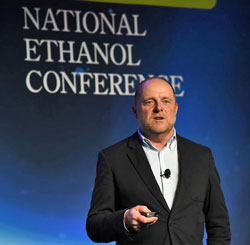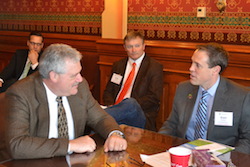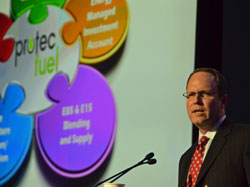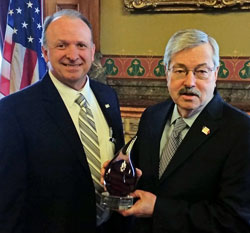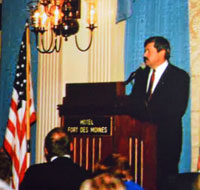 During the 21 Annual National Ethanol Conference (NEC) this week in New Orleans, the Renewable Fuels Association (RFA) released the 2016 Ethanol Industry Outlook and the Pocket Guide to Ethanol. Both resources provide up-to-date statistics, insights and analysis on the critical issues affecting the U.S. ethanol industry. Topics found in the guides include the Renewable Fuel Standard (RFS), background information on market activity, and the latest facts and figures regarding energy security, the environment, the economy, agriculture and trade.
During the 21 Annual National Ethanol Conference (NEC) this week in New Orleans, the Renewable Fuels Association (RFA) released the 2016 Ethanol Industry Outlook and the Pocket Guide to Ethanol. Both resources provide up-to-date statistics, insights and analysis on the critical issues affecting the U.S. ethanol industry. Topics found in the guides include the Renewable Fuel Standard (RFS), background information on market activity, and the latest facts and figures regarding energy security, the environment, the economy, agriculture and trade.
“As the information contained in these editions show, 2015 proved to be a banner year for the ethanol industry,” said RFA President and CEO Bob Dinneen. “These publications are meant to give readers the best overview possible of the industry so that they get a true sense of how far this industry has come and where it is expected to head next. With so much misinformation clouding the reality about ethanol, it is important for consumers, investors, and policymakers to be armed with the facts contained in these publications.”
New this year is a series of downloadable two-page issue briefs based on the Ethanol Industry Outlook, and offers a complete overview of each topic, along with detailed charts and graphs. The Pocket Guide to Ethanol contains the same information as the Outlook, but in a simpler, portable format that includes many myth-busting factoids about ethanol.


